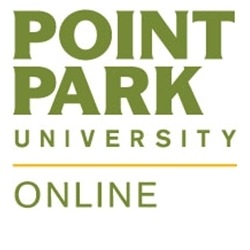Now, more American adults use mobile devices than traditional computers when searching for local products and services.
Geolocation is a marketing method that seeks to use mobile technology to push local sales. It can help businesses increase the efficiency of their marketing efforts and optimize their profits.
What Is Geolocation Marketing?
Geolocation marketing is the practice of using a customer's physical location to inform a business's advertising strategy. Information on customers' whereabouts are collected via a satellite or cell tower. Businesses can then use that information to gain insight into the locations and spending habits of potential customers.
Although mobile-based marketing techniques are not new, geolocation is a unique form. Short message service marketing (SMS), for example, allows companies to send text messages to customers about products and services, without the benefit of knowing where they are. Multimedia messaging services (MMS) are similar to SMS, except they include additional media, such as videos or images. Quick-response barcodes (QR codes) offer business information to customers who scan a barcode with their mobile device camera. Though all those techniques are useful, geolocation provides special benefits to marketers.
Benefits of Geolocation Marketing
Geolocation provides businesses with a series of advantages:
- Highly targeted audiences. Geolocation allows marketers to connect with customers in close physical proximity to their business, exponentially increasing the effectiveness of a marketing campaign.
- Information acquisition about current customers. Mobile technology allows current customers to check in to businesses they visit, write reviews, and discuss products. Geolocation technology that monitors social media can allow marketers to track that data. In doing so, they can predict behavior and increase brand awareness.
- Rewarding loyal customers. Social media technology can actually increase sales and promote loyalty. When marketers track the frequency of their visitors' visits, they are better able to provide incentives such as discounts, preferential treatment to regulars, and recognition.
- Attracting new customers. Perhaps one of the best benefits of geolocation marketing is the ability to target potential new customers. By using geolocation marketing, businesses can effectively convert both foot and online traffic into new customers at brick-and-mortar locations. Businesses can also effectively take advantage of impulse purchasing and can even out "bumps" in the sales day, reducing periods of inactivity during the day.
- Measured results. With geolocation, businesses can effectively track check-ins and gain tangible results on customer traffic and sales. The technology also allows businesses to improve their search engine rankings by taking advantage of geographically based review sites, such as Yelp.
Marketers seeking to take advantage of those opportunities should be familiar with the types of geolocation tools available.
How to Reach Your Audience
Geolocation involves three levels of audience targeting:
- Geotargeting. The most broadly based form of geolocation is geotargeting. In this format, marketers track a Web browser's IP address. Because IP addresses can't target audiences precisely, this level is best used for broad marketing regions, such as entire cities or states.
- Geofencing. On this level, marketers can target smaller areas of customer activity, such as specific neighborhoods or streets. Geofencing can also be used for entire cities. With geofencing, marketers use a smartphone's GPS location instead of its IP address, something which allows them to both pinpoint customer location and follow it as it moves. Although this type of geolocation marketing is perfect for business owners who want to attract foot traffic, it is less effective for either very wide or very specific marketing campaigns.
- Beacons. The most specific form of geolocation marketing is dependent on beacons, small devices placed in specific physical areas. Beacons are designed to receive data from Bluetooth signals in smartphones. This technology pinpoints exactly where customers walk within the space, so you can market to them accordingly. Beacons are excellent for spaces with poor reception, such as department stores. However, they offer a limited range of communication, they are dependent on the activeness of the Bluetooth signal, and they can be difficult to place and manage on public property.
Geolocation marketing is an extraordinarily valuable tool in the world of advertising. It saves companies time and money and increases both the efficiency and outcomes of their campaigns. For businesses seeking to improve their bottom line, investment in geolocation technology can lead tow success.
Additional sources: Gobabl, Business Queensland
The Future of Marketing and You
Geolocation is just one of the many ways marketing has adapted to the 21st century. For marketers seeking to become leaders in this field, the online master's in communication technology from Point Park University can give them the training they need to reach their goals. The program is designed to be completed in as little as two years, providing an expedited path toward an exciting new career.




